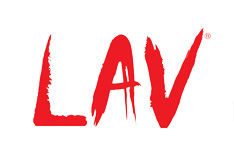Music and Cooperation
Cooperative processes fostering dependence, accountability, participation, and interaction are intrinsic to musical performance. They manifest themselves in orchestras, chamber ensembles, choruses or bands, and in collective endeavors such as operas and ballets. (1,2,3,9)
The study of music allows students to experience meaningful affirmation through teamwork, which can be of particular significance to at-risk and challenged youth. (4,5,6,8)
In addition, music education can strengthen relationships in schools by creating multiple opportunities for collaboration among students, teachers, parents, artists and the community. (7)
References
- Heath, S. & Roach, A. (1999). Imaginative actuality: Learning in the arts during nonschool hours. Chapter in E. Fiske (Ed.), Champions of change: The impact of the arts on learning (pp. 19-34). Washington, DC: Arts Education Partnership and Presidential Committee on the Arts and Humanities.
- Stevenson, L. (2011). Youth, arts and social change. Unpublished doctoral dissertation, Stanford University.
- Skyllstad, Kjell. (2007). Music in Peace Education and Conflict Transformation: Nordic Perspectives. In L. Bresler’s (Ed.), International Handbook of Research in Arts Education (p. 1053). Dordrecht: Springer.
- Horowitz, R. & Webb-Dempsey, J. (2002). Promising signs of positive effects: Lessons from the multi-arts studies. In R.Deasy (Ed.), Critical links: Learning in the arts and student academic and social development. Washington, DC: Arts Education Partnership.
- Deasy, R. (Ed.) (2002). Critical links: Learning in the arts and student academic and social development. Washington, DC: Arts Education Partnership.
- Wolf, D.P. (2000). Why the arts matter in education or just what do children learn when they create an opera. In E. Fiske (Ed.), Champions of Change: The impact of arts on learning. Washington, DC: Arts Education Partnership and the President’s Committee on the Arts and the Humanities.
- Burton J., Horowitz, R., & Abeles, H. (2000). Learning in and through the arts: The question of transfer. Studies in Art Education, 41(3), 228-257.
- Malin, H. (2012). Creating a children’s art world: negotiating participation, identity, and meaning in the elementary school art room. International Journal of Education and the Arts, 13.
- Sward. R. Band is a family. Today’s Music Educator, pp.26-27, Winter 1989
 Donate
Donate